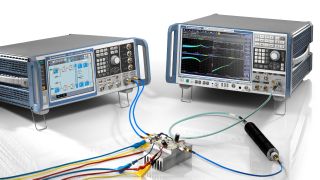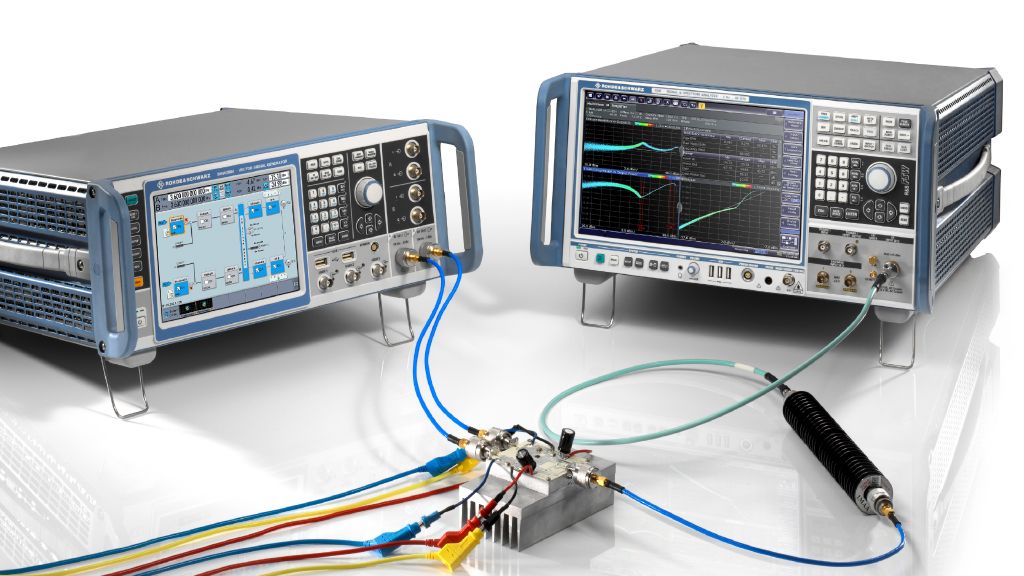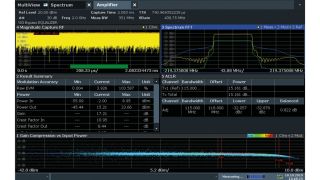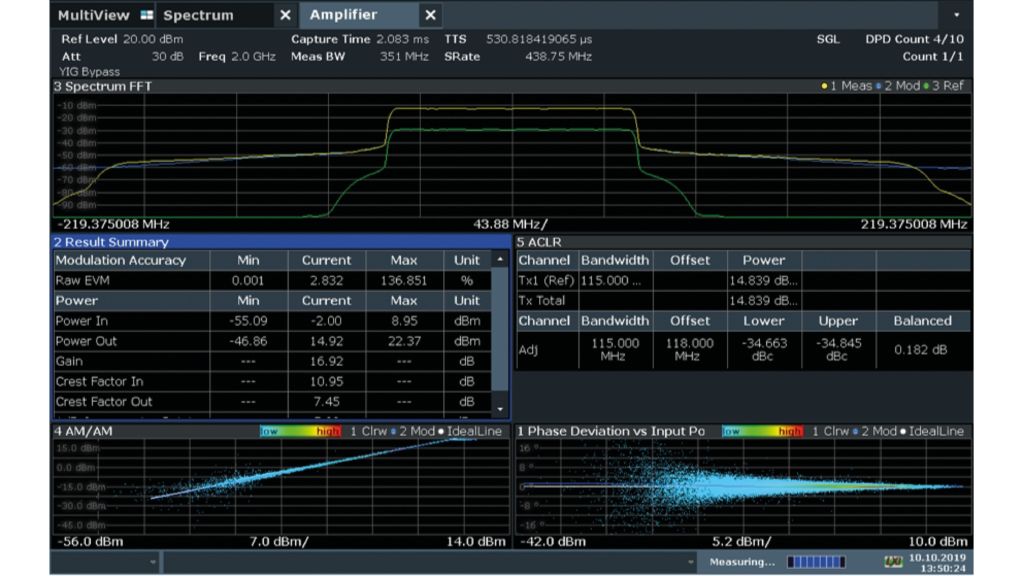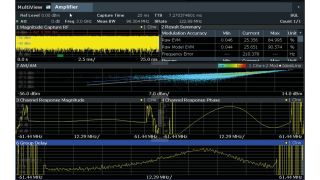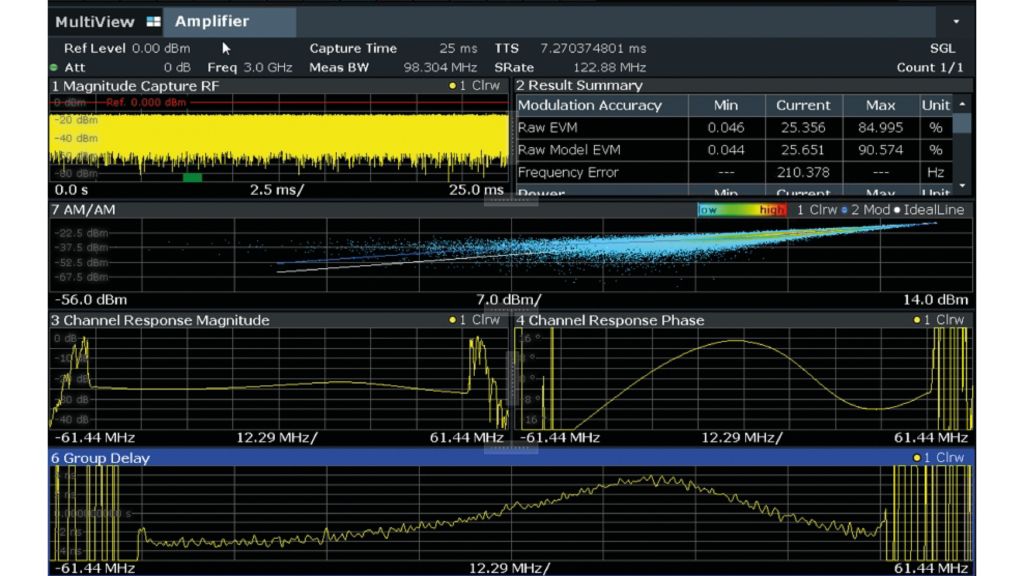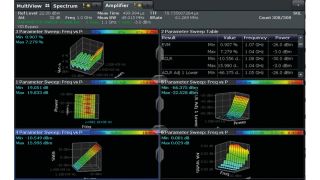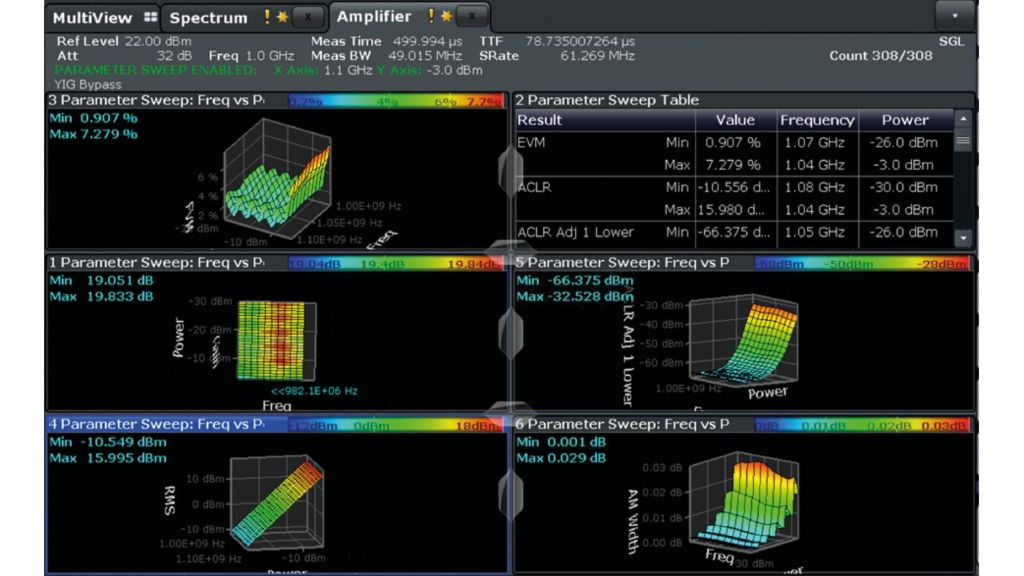Rohde & Schwarz solution
Rohde & Schwarz has developed a closed loop solution for wideband amplifier testing using the R&S®SMW200A vector signal generator and the R&S®FSW spectrum and signal analyzer. This combination setup supports RF bandwidths up to 2 GHz and RF frequencies up to 44 GHz.
The R&S®FSW-K18 amplifier measurements option is a dedicated test application that controls the signal generator and offers user-friendly and automatically synchronized setup.
The R&S®FSW-K18 option offers all key features needed for amplifier characterization. It provides insight into the sources of signal degradation due to nonlinearity, frequency response and signal-to-noise ratio. Many characteristics such as EVM, ACLR, AM/AM and AM/PM, gain and gain compression are derived from one RF measurement.
The R&S®FSW-K18 option’s unique approach allows any test waveform to be used to derive EVM, regardless of the standard – and even if the user does not know the signal type or structure, which might be the case if an end customer provides the wanted test waveform. Here is the secret: R&S®FSW-K18 compares the received signal with the reference signal sent by the vector signal generator.
Most amplifiers typically operate close to their compression in a very nonlinear mode to improve efficiency. The unique R&S®FSW-K18 EVM method delivers more accurate EVM results than standard demodulation techniques.
In 5G, the peak-to-average ratios are very high due to the signal structure. Crest factor reduction is typically used in installations to improve the efficiency of the amplifiers. The R&S®SMW-K548 option on the vector signal generator allows the signal to be manipulated to show a desired crest factor, and it applies additional signal filtering.



